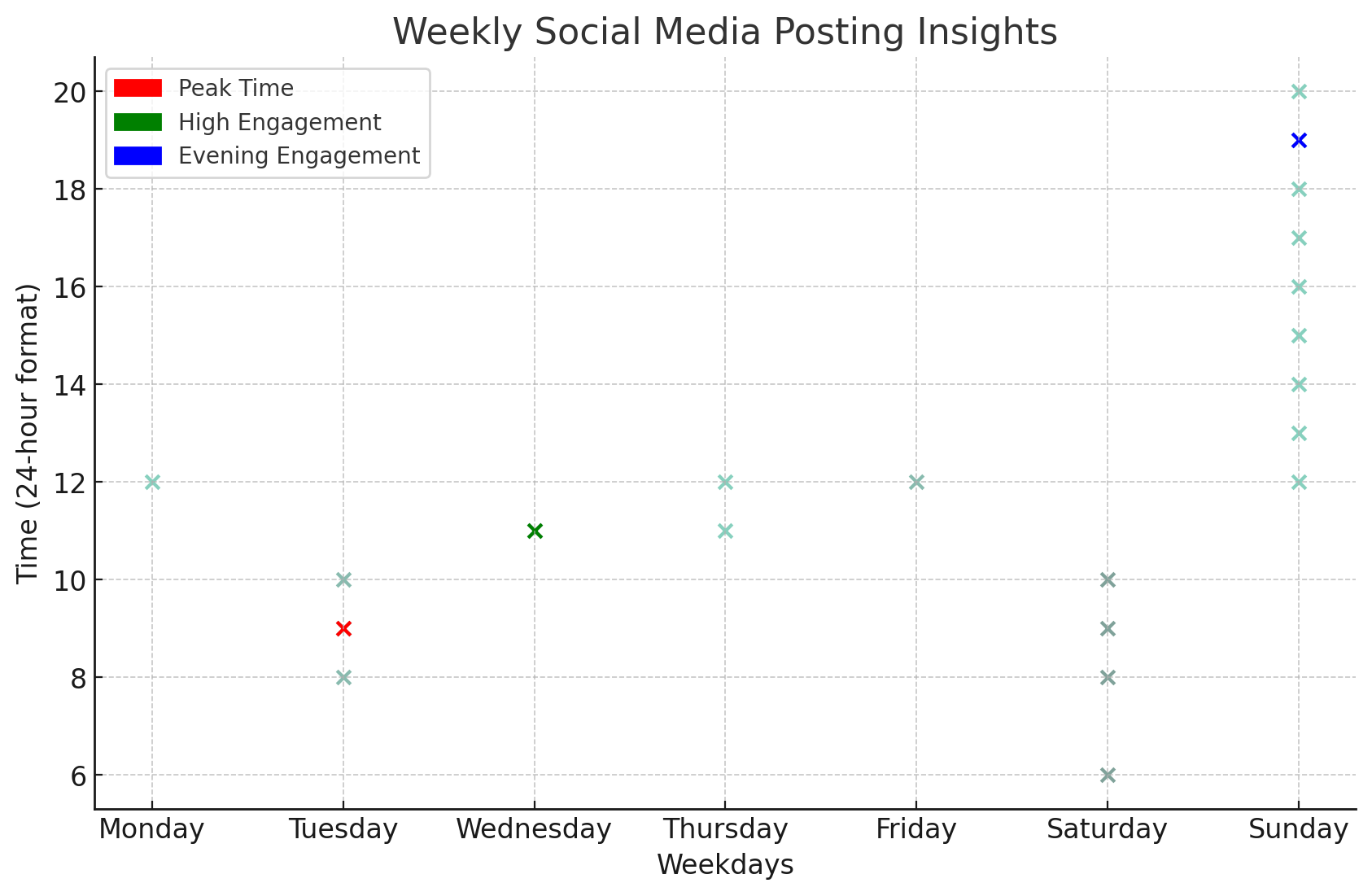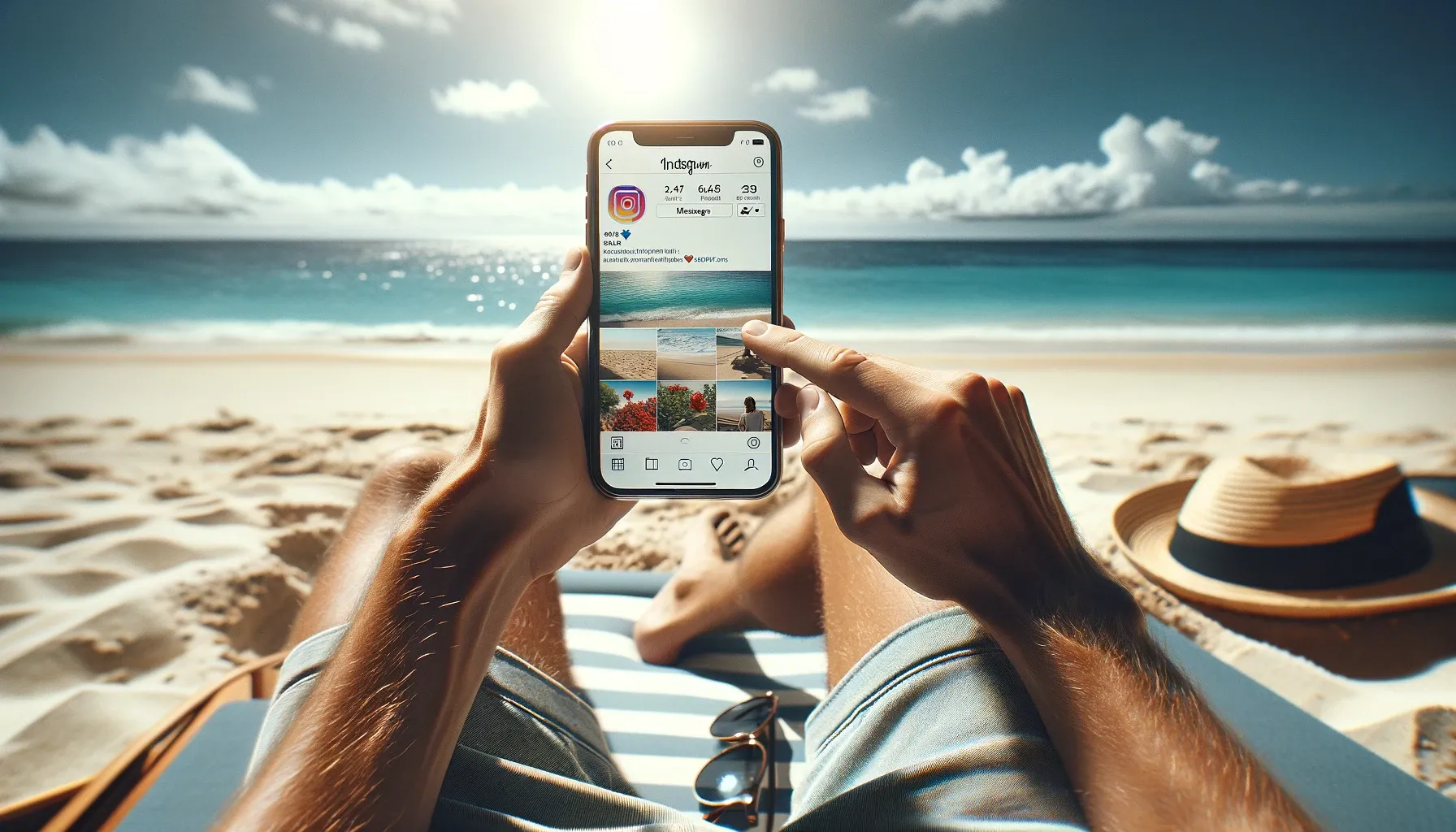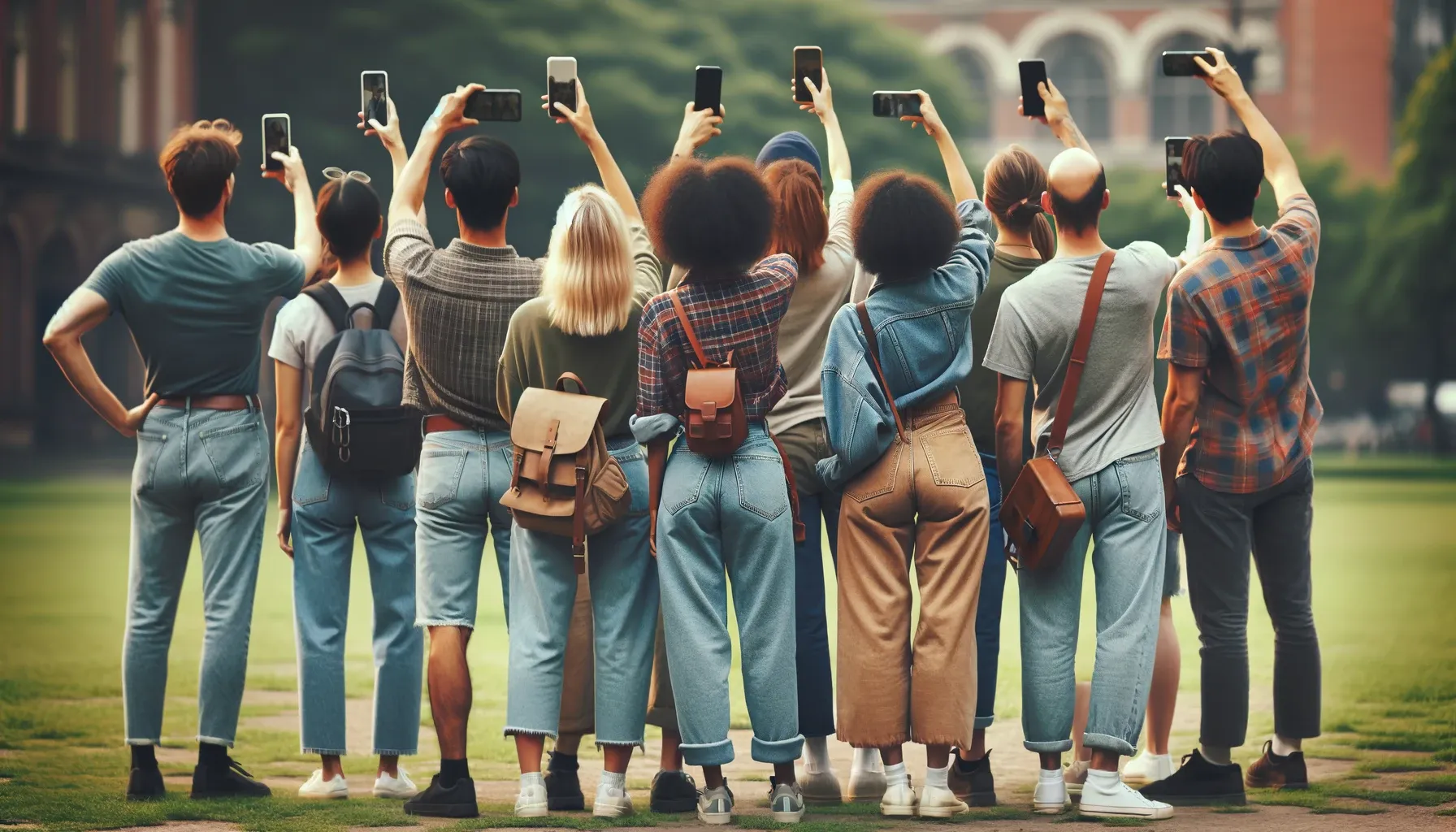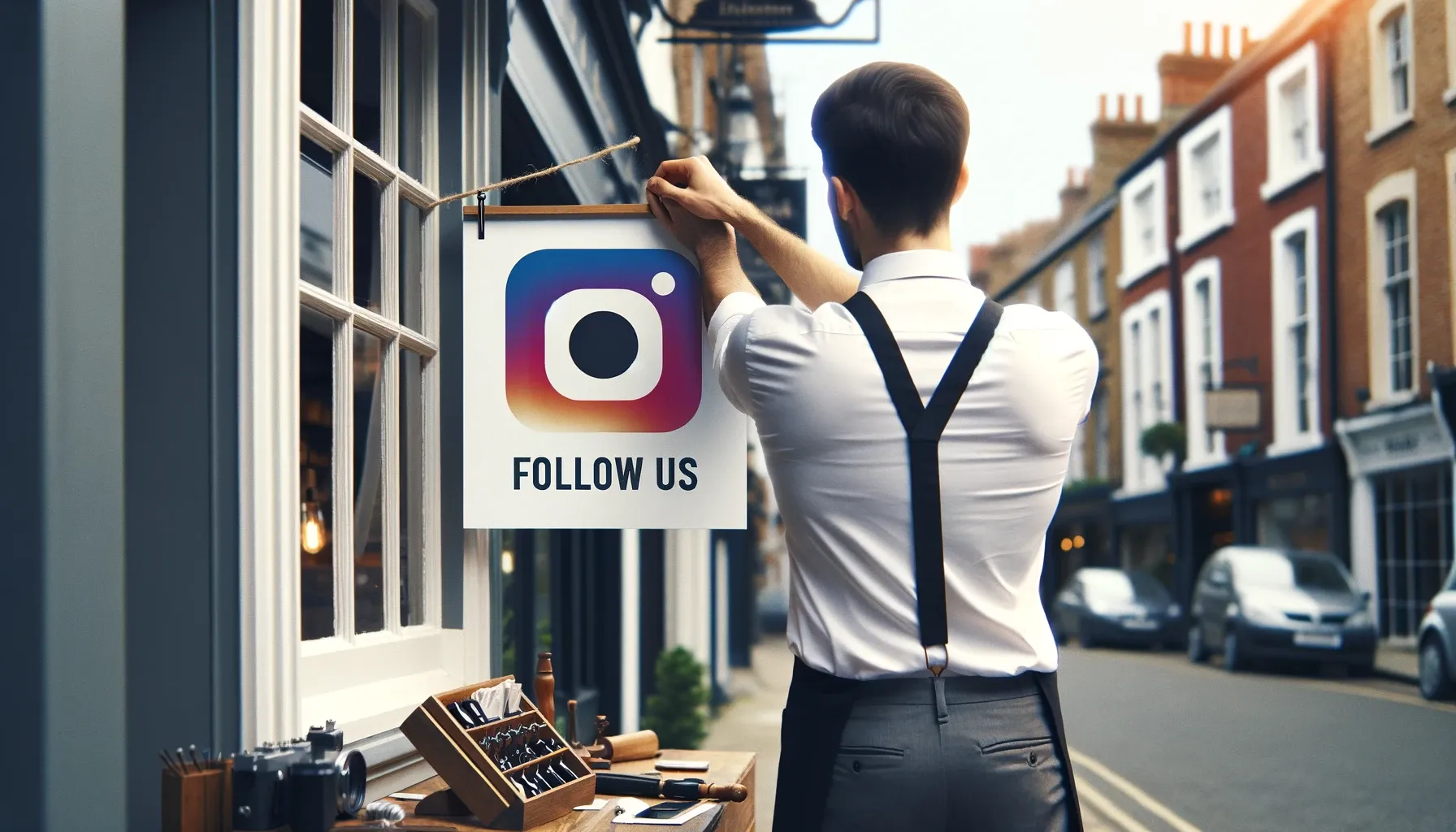Best Time to Post on Instagram
Do you want to unlock the full potential of your Instagram posts? Here are the best times to post on Instagram to help you achieve that!
The Best Times to Post on Instagram in 2024

Maximizing engagement on Instagram hinges on understanding when your audience is most active. For targeting a North American audience in 2024, timing your posts strategically throughout the week can greatly boost visibility and interaction.
Weekday Insights
- Mondays: Kickstart the week with a post at 12 p.m., aligning with lunch breaks.
- Tuesdays: Early risers engage more, making 9 a.m. the peak time, with the 8–10 a.m. window also showing strong engagement.
- Wednesdays: 11 a.m. stands out as the universally optimal time for posting.
- Thursdays: Two prime slots at 11 a.m. and 12 p.m. offer increased visibility.
Weekend Dynamics
- Fridays: Though a specific time isn't pinpointed, mid-day posts tend to perform well.
- Saturdays: An early start is key, with 6 a.m., 8 a.m., 9 a.m., and 10 a.m. being the most effective times.
- Sundays: Evening posts at 7 p.m. capture high engagement, with steady activity from noon to 8 p.m.
Daily Time Frames
- Mornings: Posting between 7 a.m. and 10 a.m. on weekdays taps into the morning routine of many users.
- Midday: The 11 a.m. slot on Wednesdays is particularly potent, likely due to midday breaks.
- Evenings: Sunday evenings, especially around 7 p.m., see a surge in engagement.
Special Note on Instagram Reels
For Instagram Reels, a newer but increasingly popular feature, the best posting times are at 9 a.m. and 12 p.m., from Monday to Thursday. This indicates a pattern where users engage with dynamic, short-form content during their breaks and start of the day.
Adapting to these time frames can lead to improved engagement rates on Instagram, helping businesses and individuals to connect more effectively with their audience. Keep in mind, these timings are based on general trends and may vary based on specific audience habits.
Why Instagram Matters

In social media, Instagram's influence is hard to overlook. With a huge user base of 2 billion active monthly participants, Instagram ranks as one of the top three social platforms globally. This presence is particularly notable in the United States, which boasts over 143 million Instagram users, underscoring its significance in advertising.
The platform's appeal cuts across gender lines, with a nearly balanced distribution of 51.8% male and 48.2% female users. Such variety in demographics presents a unique opportunity for businesses to target a broad audience. Engagement on Instagram is a key metric, and the numbers are telling. For instance, users are increasingly active, spending an average of 12 hours monthly on the app.
Business accounts with a significant following (over 100,000) see an average engagement rate of 0.57%, a figure that offers insight into user interactions with content. Breaking down the numbers, the engagement rates vary by post type: 0.71% for all posts, 0.59% for photo posts, with carousel posts and Instagram Reels showing higher engagement at 1.26% and 1.23%, respectively. Notably, Instagram Reels lead the pack with an impressive average engagement rate of 1.95%.
This data paints a clear picture: Instagram is a powerful tool for reaching and engaging with a mixed audience. The platform offers varied avenues for businesses to connect with their target market, whether through photos, carousels, or the increasingly popular Reels.
Instagram's Audience Behavior

Demographic Trends
Instagram's audience primarily consists of younger individuals, with the 25-34 age group forming the largest segment at 31.7%. Following closely are the 18-24-year-olds, emphasizing the platform's appeal to a youthful demographic. This trend is significant for marketers targeting a dynamic and younger audience.
Global Reach and Geographic Variations
The platform's global influence is pronounced in the Asia-Pacific region, led by India. This region is becoming increasingly important for Instagram, with India having the largest potential ad audience. The United States and Brazil also feature prominently, presenting various geographic markets for businesses.
Engagement Patterns and Content Preferences
User interaction on Instagram peaks at 8 p.m., with Sundays attracting the highest engagement rates. Content-wise, photos featuring faces and videos outperform other post types in engagement, offering strategic insights for content creation.
Gender Distribution and User Engagement
The gender split on Instagram is nearly even, allowing businesses to reach a balanced audience. Users spend an average of 12 hours per month on the app, highlighting their in-depth engagement with the platform.
Business Impact and Revenue
Instagram's role in business marketing is significant, contributing $43.2 billion in ad revenue in 2022. Over 200 million businesses use the platform, underlining its importance in marketing.
User Engagement and Conversion Rates
Business accounts on Instagram see an average engagement rate of 0.65%, with specific formats like carousels and Reels performing even better. The platform also boasts a high conversion rate from interactions in Direct Messages, and a majority of users feel that Instagram helps them form meaningful relationships with brands.
Instagram for Businesses

Expanding Business Reach and Increasing Revenue
In 2022, the platform's ad revenue reached $43.28 billion and is projected to climb to $50.58 billion in 2023. This growth trajectory highlights the platform's effectiveness for business advertising. A notable 90% of Instagram's users follow at least one business, indicating a receptive audience for brand messaging. Furthermore, 70% of shoppers turn to Instagram when considering their next purchase, making it a pivotal platform for influencing consumer decisions.
Optimizing Content Strategy
When it comes to content preferences, the majority of Instagram's weekly users favor humor, with 50% enjoying funny content. Close behind, 46% are drawn to creative posts, while 41% appreciate informative content. These preferences offer businesses strategic directions for content creation. Tagging products in feed posts can significantly boost sales, with an average increase of 37%. A more frequent posting strategy, with two or more tagged posts per day, can potentially double transactions, highlighting the effectiveness of active engagement on the platform.
Conclusion
Adapting to the specific times highlighted for 2024, particularly weekday midday and Sunday evenings, as well as effectively utilizing Instagram Reels, can lead to more meaningful interactions with your audience on Instagram.
